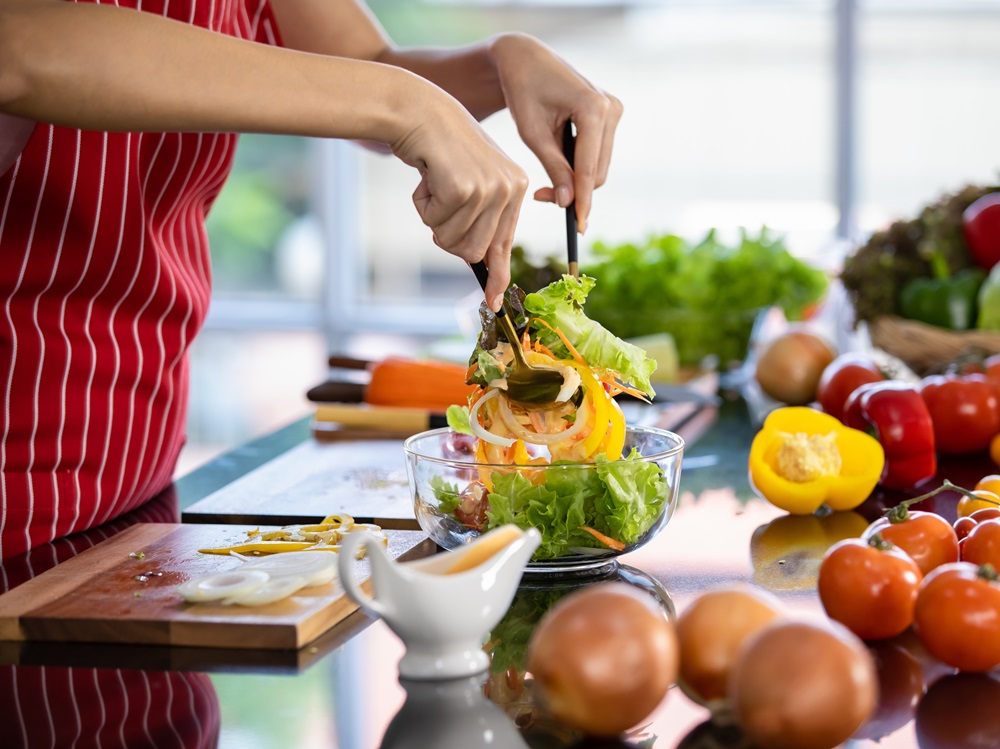- How to calculate food cost for a recipe
- Step 1: List all ingredients needed for the recipe
- Step 2: Weigh each ingredient
- Step 3: Calculate the cost for each ingredient
- Step 4: Add up all ingredients’ costs
- How to price menu items
- How to calculate the price for a dish with ideal food cost
- How to calculate recipe cost using ideal gross profit
- How to increase menu profitability
- 1. Keep your menu small
- 2. Cook with seasonal ingredients
- 3. Make portion sizes smaller
- 4. Increase prices gradually
- 5. Include many low-food cost items in your menu
- Final words
Running a restaurant is often about finding the balance between creating interesting dishes that would attract customers and pricing your menu just right, so clients visit you often while still making a profit.
The first step to a profitable menu is learning how to calculate food cost for a recipe.
In this article, we’ll show you step by step how to calculate a recipe’s cost and give you tips on how to lower the food costs and increase the profit.
How to calculate food cost for a recipe
High food costs are one of the biggest challenges restaurant owners face. As the price of the ingredients rises, you need to be on top of your menu costing to ensure you are always turning up a profit.
Let’s see how to calculate food cost for a recipe:
Step 1: List all ingredients needed for the recipe

You can do it all school way on a piece of paper or open a new spreadsheet in Excel. The latter one will make it easier to update your pricing if the cost for ingredients changes.
Ensure that you include everything you use to cook, down to a tablespoon of oil or a half teaspoon of salt. To make it easier to follow, let’s choose an example. The ingredients for carbonara pasta are:
- Pasta
- Eggs
- Guanciale
- Olive oil
- Grana Padano
- Pepper
- Salt
Step 2: Weigh each ingredient
To make our calculations accurate, we need to know exactly how much of each ingredient is used to prepare a single portion. Moreover, using the same quantity of ingredients each time ensures all your plates look and taste the same, no matter if it is rush hour or a chill Sunday lunch.
Therefore, for our serving of pasta carbonara, we have:
- 200 g pasta
- 120 g eggs
- 100 g guanciale
- 10 g olive oil
- 25 g grana Padano
- 5 g pepper
- 3 g salt
Step 3: Calculate the cost for each ingredient

When you stock up for the restaurant, you buy the ingredients in bulk. For example, you buy 10 kilograms of pasta so you can ensure you have enough inventory to serve your customers.
You will have to do a bit of math to calculate the cost for a small quantity of ingredients, but we will make it easy with simple formulas.
First, find out how much you pay for one kg of an ingredient. If you pay $20 for 10 kilograms of pasta, one kilogram costs you $2.
The formula to calculate the cost per ingredient serving is:
Ingredient Serving Cost = (Ingredient Weight in Grams x Price per Kilogram)/1,000
In our case:
Pasta cost for the recipe = (200 x 2)/1000 = 0.4. dollars
You now have to repeat the process for each ingredient.
Step 4: Add up all ingredients’ costs
How to calculate food cost for a recipe? Simply, add up all the individual costs for each ingredient that you’ve calculated in the previous step.
You now know how much you spend on the prime material when you create a new recipe. But the food cost should not be the only factor you use when you price a menu item as you also have to account for labor, utilities, and much more.

Choosing the right price for your menu items can make or break your business. After you learn how to calculate food cost for a recipe, you need to factor in all the other expenses. Simply put:
Menu item price = Food Cost + Labor Costs + Overhead Costs + Profit
It can be calculated to estimate exactly how much labor goes into preparing a specific dish, so you need some formulas to help you better choose a menu price. You have two options:
How to calculate the price for a dish with ideal food cost
The ideal food cost is the percentage of a menu item’s price that is used to acquire ingredients and prepare the dish. Healthy restaurants usually practice an ideal food cost between 25% and 35%.
You can play around with it to decide what price would be best for your target market. For this example, we will choose an ideal food cost of 30% and use the COGS (cost of ingredients) for pasta carbonara, which we calculated to be $3.
Price = COGS/Ideal Food Cost
For our example:
Price = 3/0.3 = $10
How to calculate recipe cost using ideal gross profit
The gross profit is what you are left with after you pay the price for the ingredients, the labor, and the utilities. You will use the following formula:
Gross profit = (Price – COGS)/Price
For our carbonara pasta example, we have:
Gross profit = (10 – 3)/3 = 0.7 = 70%
You can play around with the price until you achieve the gross profit you desire.
If you want to learn more about menu pricing, check out our in-depth article:
How To Price Menu Items To Increase Your Restaurant’s Profit Margin
Restaurant owners face multiple challenges, from ingredient prices surging to unexpected world crises. If you want to keep your menu profitable, while still providing clients with quality dishes that convince them to come back, check out these tips:
When you have a wide variety of items on your menu, it can be hard to keep track of your inventory, and, inevitably, some items will go bad, and you will lose money.
A small menu is also more attractive for customers because it communicates that you prize quality and freshness and it also makes the decision process easier when there are fewer options.
2. Cook with seasonal ingredients
Ingredients that are in season will always be cheaper, so you will pay less for the prime material if you choose to incorporate them into your dishes. Moreover, by changing up your menu once in a while, you get to offer clients new culinary experiences that they can get excited about.
To save money on reprinting paper menus, use the free online menu creator from GloriaFood that you can update any time you want, at no charge. It is also intuitive to use, so you can get it up and running in no time.
Create an online restaurant menu that clients won’t be able to resist
Make as many changes as you want, free of charge
You can also make the online menu available for in-location clients by activating on-premises dining and generating a QR code menu. All you have to do is print out the code and stick it on every table. You can now offer an enhanced dining experience that will lead to increased client satisfaction.
3. Make portion sizes smaller
If you often notice that clients leave food on their plates, your portions may be too big. By reducing the portion, you decrease the cost of used ingredients and increase your profit.
To satisfy your customers, you can create combos that make a full meal, such as main+ side + drink, or main + side + dessert at a promotional price.
4. Increase prices gradually
If no other method works and you have to resort to price increases to keep making a profit, do so gradually. When you make a dramatic change in price, you risk deterring loyal customers from buying and they will turn to your competition.
The key to menu profitability is to have as many low-food-cost items as possible. Some examples of dishes that cost little to produce are burgers, pasta, salads, and breakfast foods.
Another way to add high-profit margin items to your menu is to allow customers to customize their dishes with toppings. They get to create the perfect menu item while you enjoy a bigger profit at the end of the month.
Allow customers to create their perfect dish with toppings
Use this free online menu creator to enable menu item customization
Final words
Now that you know how to calculate food cost for a recipe, it is time to take a hard look over all your menu items and try to make them as profitable as possible. You can always rely on the online menu creator from GloriaFood to easily create a menu that clients won’t be able to resist.
- How to calculate food cost for a recipe
- Step 1: List all ingredients needed for the recipe
- Step 2: Weigh each ingredient
- Step 3: Calculate the cost for each ingredient
- Step 4: Add up all ingredients’ costs
- How to price menu items
- How to calculate the price for a dish with ideal food cost
- How to calculate recipe cost using ideal gross profit
- How to increase menu profitability
- 1. Keep your menu small
- 2. Cook with seasonal ingredients
- 3. Make portion sizes smaller
- 4. Increase prices gradually
- 5. Include many low-food cost items in your menu
- Final words








